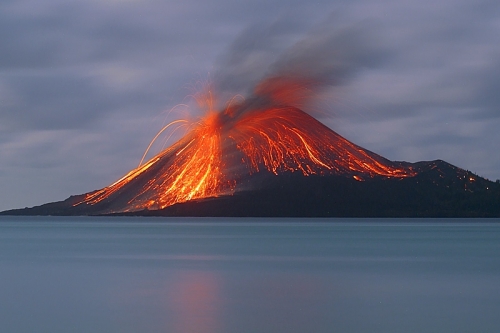This year is the 71st anniversary of the most recent eruption of Italy's famed Vesuvius. Not only the most picturesque volcano in the world, but also the most dangerous. Vesuvius, however, has been remarkably quiet for the last 71 years, after thousands of years of activity. Does this mean we can expect another eruption from Vesuvius in the near future? All the signs right now would suggest not (and we hope they are right), but the risk is still very high.
For most people, when you mention Vesuvius, they might think of the 79 A.D. eruption that buried Pompeii and Herculaneum. The victims of that eruption were, amazingly, cast in their death poses by ash fall and pyroclastic flows from Vesuvius. It was also the eruption that Pliny the Younger observed from across the Bay of Naples. His detailed descriptions of the eruption convinced volcanologists to name the style of eruption a "Plinian" eruption.
One of the most interesting points is that Vesuvius' history is much more than the single eruption in 79 A.D. In fact, the 1631 eruption of Vesuvius was as powerful as the 79 A.D. eruption; as many as 6,000 people may have died in that event, a barely know tragedy. Since 1944, nothing has happened at Vesuvius. After centuries of restlessness punctuated by large explosive eruptions, Vesuvius seems to have slipped into a bit of a nap. This doesn't mean that Vesuvius is done or that the volcano is any less hazardous. In fact, this quiet makes it potentially more challenging to create a volcanic mitigation plan for the area around Vesuvius, because there isn't agreement about what the future holds for one of Europe's most prominent volcanoes.
The city of Naples (and its surrounding areas) is quite far from being safe. In fact, some volcanologists think that Vesuvius has the potential for another very large eruption, on the same scale as the 1631 or 79 A.D. event. This is based on geophysical evidence derived from looking at how seismic waves generated by earthquakes move underneath the volcano. They suggest that there might be magma at a depth of 8 to 10 kilometers below Vesuvius. Now, the tricky thing here is whether this magma is able to erupt or not. Others think that over the past 20,000 years, the magmatic system has fundamentally changed under the volcano, making a future explosive eruption impossible.
The metropolitan area around Naples has a population of over 3 million, meaning any evacuation that might be needed could be some of the most challenging that we've experienced around a volcano. The roads around Naples aren't designed for the immense volume of traffic. Most moderate eruption scenarios would rain a few centimeters of ash on the area around the volcano, including Naples, itself. Worst case scenario models, using some of Vesuvius' largest eruptions, would bury downtown Naples in meters of ash.
The other problem that arises from the relatively long quiet of Vesuvius is that fewer and fewer people were alive during its last eruption. Hazard planners are well aware of the idea that the perceived threat of a disaster diminishes greatly as the memory of the last eruption fades. Convincing people to prepare now for the next Vesuvius eruption is challenging when they see a picturesque mountain in the outskirts of town. Seventy-one years might seem like a long time on the human timescale, but for a volcano with 300,000 years of activity, this it's the blink of an eye.Today, predicting the next move of the giant is impossible. We can only wait for him.



